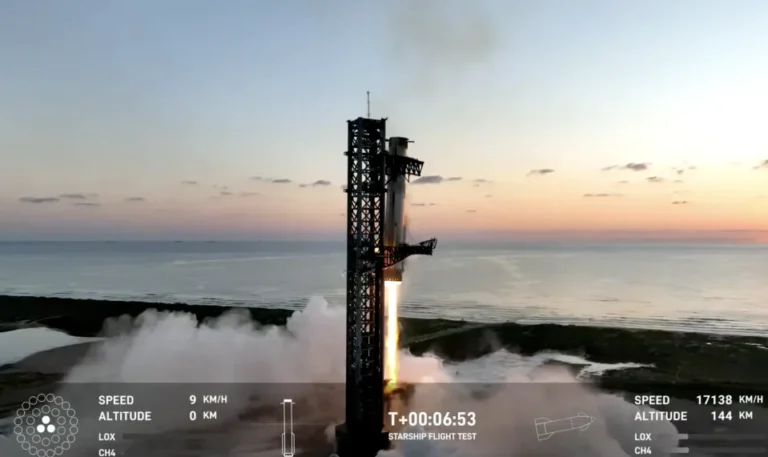In terms of SpaceX’s intentions to implement a fully reusable system for both the Starship and the Super Heavy rocket, this is a significant milestone.
After liftoff, SpaceX’s Super Heavy rocket was able to successfully return to the pad, where it was captured by the mechanical arms of the launch tower. This was an extraordinary accomplishment that took place on Sunday morning. This significant achievement was accomplished by the company’s Starship during its fifth flight, and it represents a significant step toward the rocket’s intended reusability. The Starship was launched from SpaceX’s Starbase in Boca Chica, Texas, at approximately 8:25 AM Eastern Time.
Mechazilla has caught the Super Heavy booster! pic.twitter.com/6R5YatSVJX
— SpaceX (@SpaceX) October 13, 2024
SpaceX is no stranger to landing rockets; in fact, the business has been reusing its Falcon 9 workhorse for a number of years now. However, when it came to recapturing Super Heavy, the company used an entirely different method. When Super Heavy returned to its launch location, it had to navigate into the small hole between the launch tower’s outstretched “chopsticks.” This is in contrast to the regular landing of Falcon 9, which takes place on a drone ship out in the ocean. If the motion was not executed properly by Super Heavy, there was a possibility that the tower might be destroyed. However, it did, and live footage from the flight test shows the booster parking itself back at the tower in a clean manner, to the resounding cheers of everyone who was watching from the viewing room.
Starship, on the other hand, continued its flight for around one hour after it separated from the launcher and landed in the Indian Ocean as scheduled at approximately 9:30 AM Eastern Time. It is intended for the entire Starship transportation system, which includes the Super Heavy first stage and the Starship second stage, to be able to be reused.

